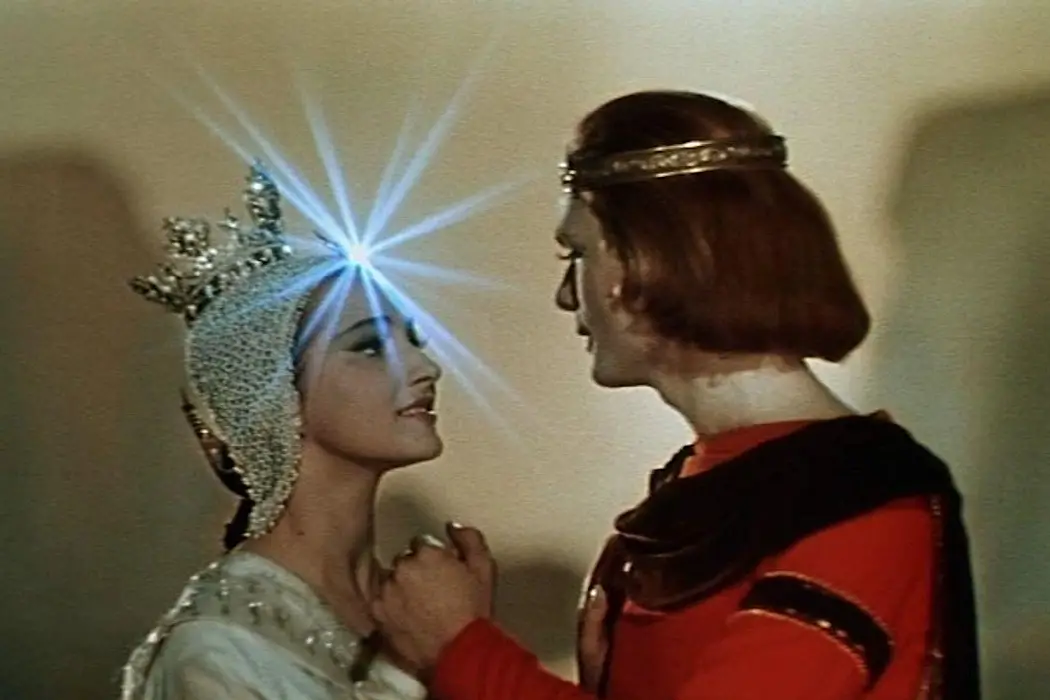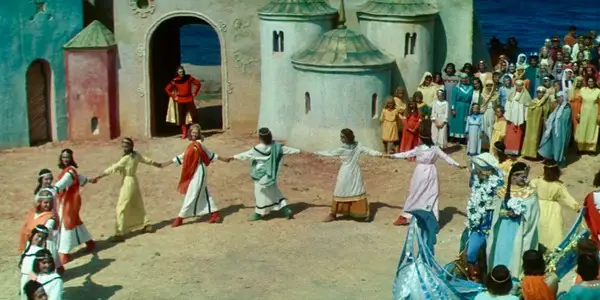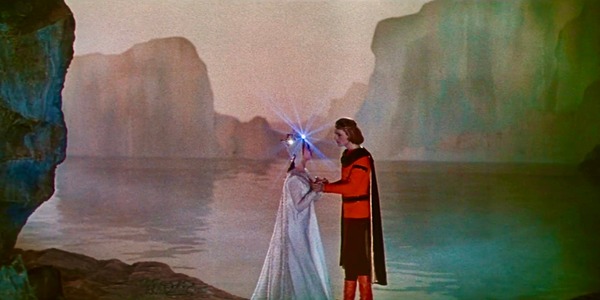THE TALE OF TSAR SALTAN: An Impeccably Realized Colorful Epic

Soham Gadre is a writer/filmmaker in the Washington D.C. area.…
While at the time the moniker of Soviet Walt Disney could’ve been considered a grand bestowment upon Aleksandr Ptushko, today it could very easily be seen as an insult. Of course, they weren’t comparing him to Walt Disney the man or even Disney the artist, but the fact that his movies embodied a level of majesty and fantasy that was surprising coming from the Soviet Union, a place which many Americans were surely made to believe did not have an imagination beyond grey concrete and the hammer and sickle emblem – unlike Disney of course, which was the pinnacle of imagination in entertainment. It’s funny and ironic now to see Ptushko’s films resurrected in 4K in the landscape of Marvel/Disney slop that is so emblematic of the lack of imagination, a lack of craftsmanship, and an embrace of the values of lazy money-grubbing corporate pencil pushers. Ptushko, in every frame, in every millisecond of film, embodies everything that mainstream Hollywood cinema isn’t – a free canvas of artistry.
Colors Galore
The Tale of the Tsar Saltan is probably the least known of the triumvirate of restorations happening recently, the other two being Sampo and Ptushko’s ultimate masterpiece Ilya Muromets (which was brought over and unceremoniously butchered into the more Hollywood-friendly cut The Sword and the Dragon by Roger Corman).
Tsar Saltan is not quite as elaborately decorated as Sampo nor as gargantuan of an undertaking as Ilya Muromets, but its beautiful hand-crafted sets and distinct Medieval Slavic color palette give it the same expansive transportive feel as his other films. Opening with a beautiful canvas of the white and blue wintry outsides contrasting to the deep glowing red and orange interiors of warm fire-lit homes is a typical trademark of Ptushko, who uses set colors as a means of narrative direction as much as the camera.

Tsar Saltan is not quite as elaborately decorated as Sampo nor as gargantuan of an undertaking as Ilya Muromets, but its beautiful hand-crafted sets and distinct Medieval Slavic color palette give it the same expansive transportive feel as his other films. Opening with a beautiful canvas of the white and blue wintry outsides contrasting to the deep glowing red and orange interiors of warm fire-lit homes is a typical trademark of Ptushko, who uses set colors as a means of narrative direction as much as the camera.
The Tsar Saltan (Vladimir Andreyev) asks a beautiful young rural woman (Larisa Golubkina) to be his wife, much to the chagrin of her two jealous sisters, the weaver (Vera Ivleva) and the cook (Nina Belyaeva), who plot with the tsar’s Mother-in-Law (Olga Viklandt) of the king to have her and her son, the heir to the throne, killed. In order to save them, the Tsar goes on a quest to a seaside kingdom where he sees a swan who transforms into a guardian angel and guides his destiny.

The fantasy inherent within Ptushko’s masterpieces is equaled by the set design and artistry, all of which take every aspect of the frame to a maximum – colors are amplified, costumes are diverse, the hot and cold hues perfectly complement each other and the impeccably painted background canvasses feel at one with the foreground actions. It’s a testament to how adherence to ‘realism’ in cinema is a myth and it’s an eye for composition that trumps everything.
Ptushko to the Max
The Tsar Saltan (Vladimir Andreyev) asks a beautiful young rural woman (Larisa Golubkina) to be his wife, much to the chagrin of her two jealous sisters, the weaver (Vera Ivleva) and the cook (Nina Belyaeva), who plot with the tsar’s Mother-in-Law (Olga Viklandt) of the king to have her and her son, the heir to the throne, killed. In order to save them, the Tsar goes on a quest to a seaside kingdom where he sees a swan who transforms into a guardian angel and guides his destiny. The fantasy inherent within Ptushko’s masterpieces is equaled by the set design and artistry, all of which take every aspect of the frame to a maximum – colors are amplified, costumes are diverse, the hot and cold hues perfectly complement each other and the impeccably painted background canvasses feel at one with the foreground actions. It’s a testament to how adherence to ‘realism’ in cinema is a myth and it’s an eye for composition that trumps everything.
The 4K restoration of The Tale of Tsar Saltan was released via Deaf Crocodile Films for Vinegar Syndrome in June 2023
Watch The Tale of Tsar Saltan
Does content like this matter to you?
Become a Member and support film journalism. Unlock access to all of Film Inquiry`s great articles. Join a community of like-minded readers who are passionate about cinema - get access to our private members Network, give back to independent filmmakers, and more.
Soham Gadre is a writer/filmmaker in the Washington D.C. area. He has written for Hyperallergic, MUBI Notebook, Popula, Vague Visages, and Bustle among others. He also works full-time for an environmental non-profit and is a screener for the Environmental Film Festival. Outside of film, he is a Chicago Bulls fan and frequenter of gastropubs.













